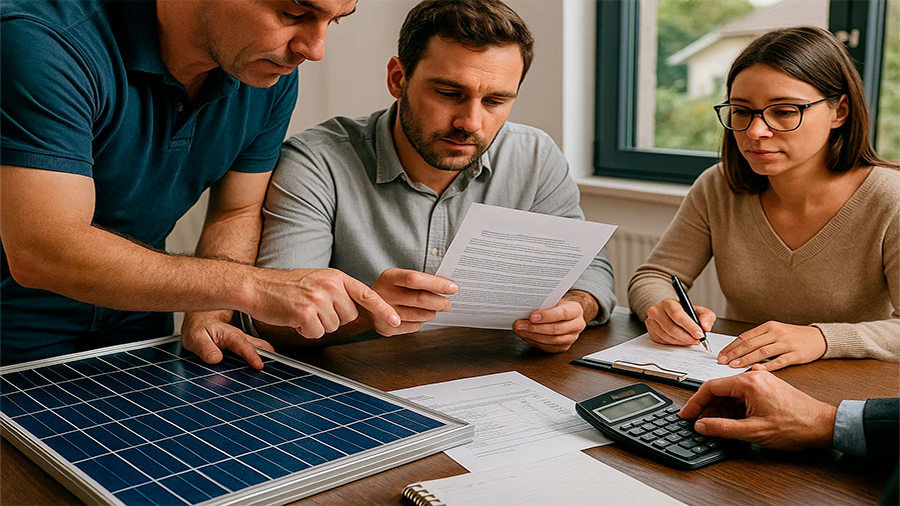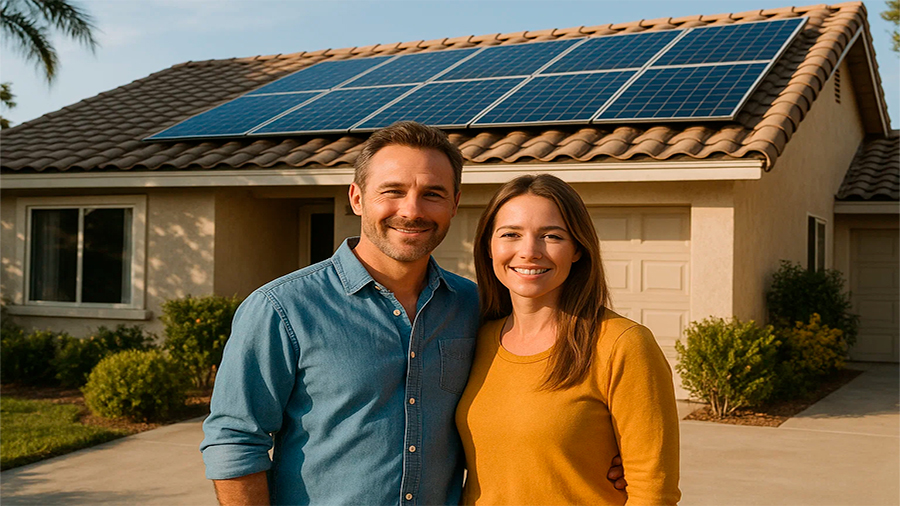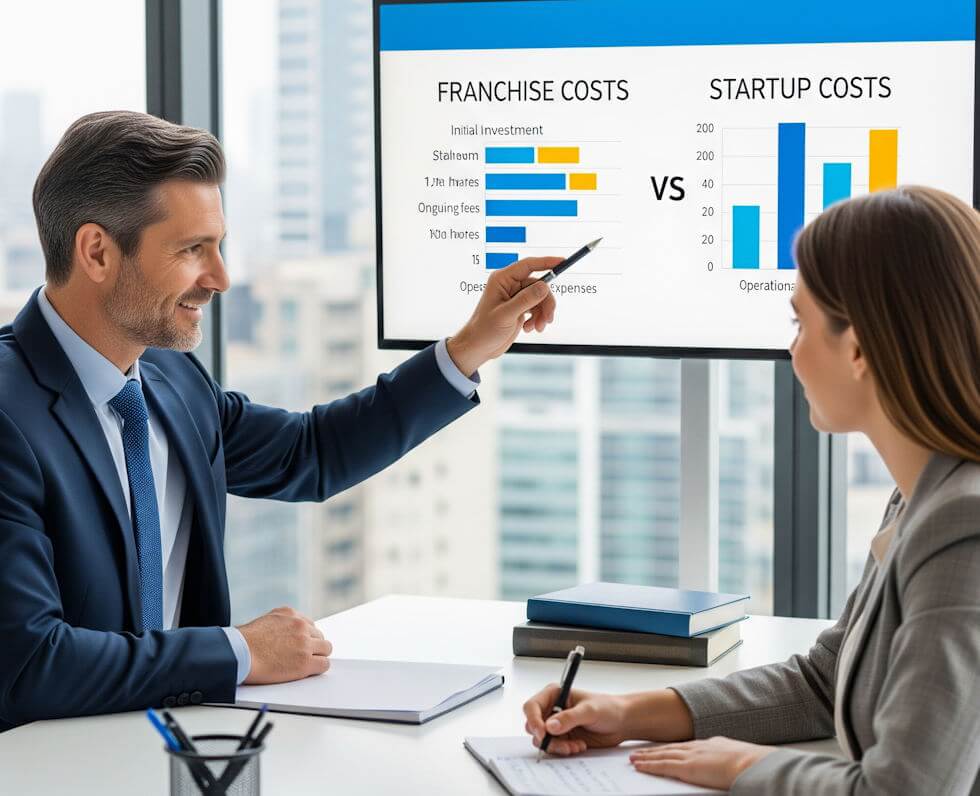Loans for Installing Solar Panels — Reality or Marketing?
Solar panels sound like a dream: clean energy, lower electric bills, and maybe even a step toward energy independence. But if you’ve looked into installing them lately, you’ve probably noticed something else — the financing. “No money down.” “Own your power.” “Get paid to go solar.” The language is slick, the promises are bold, and nearly every installer offers some kind of loan or payment plan. But do these solar loans really save you money? Or are they just clever marketing dressed up in green? As solar adoption grows, it’s time to look at when financing makes sense — and when it’s just a costly illusion.
Why Solar Panel Loans Exist
Solar panels aren’t cheap. A standard home installation can cost anywhere from $12,000 to $30,000, depending on your location, roof, and system size. Even with tax credits, that’s a steep price for most households. Loans bridge the gap. Instead of paying everything upfront, you spread the cost over several years and — ideally — use your monthly energy savings to offset the payments.
The logic is simple: your loan payment replaces your utility bill. Once the loan is paid off, the energy is essentially free. In the best-case scenario, you save money from the first month. But that outcome depends on a lot of moving parts — and some assumptions that may not hold up in practice.
Types of Solar Loans
Most solar loans fall into two categories: secured and unsecured. Secured loans are tied to your home equity — like a second mortgage — and usually offer lower interest rates. Unsecured loans don’t require collateral, but the rates are higher, and repayment terms may be shorter. Either way, you’re entering a long-term financial commitment that needs to be carefully evaluated.
When Solar Financing Is a Smart Move
Let’s be clear: solar loans aren’t always bad. In fact, they can be a smart investment when the conditions are right. If you live in a sunny area, pay high electricity rates, and qualify for tax credits, financing a system could be the most cost-effective way to go solar today instead of waiting years to save up the cash.
Key Benefits
- Upfront affordability: Spread the cost over time without a large initial payment.
- Energy savings: Reduce or eliminate your utility bills, especially if your energy rates are high.
- Tax incentives: The U.S. federal tax credit currently covers 30% of installation costs (as of 2025).
- Property value boost: A solar-equipped home often sells faster and at a higher price.
In this scenario, the math works: the loan payment is equal to or less than your monthly utility savings. You break even early, the system pays for itself, and everything after that is a return. But if those assumptions don’t hold — if your system is overpriced or your loan terms are steep — the benefits vanish fast.

When Solar Loans Turn Into Greenwashing
While many loans are legitimate, others are just marketing tactics. Some installers bundle inflated system costs into long-term loans with hidden fees, giving the illusion of affordability while quietly extracting more money. Others offer teaser interest rates that shoot up later. In some cases, the panels are installed quickly — but the savings take years to appear, if ever.
Common Pitfalls to Watch For
- Zero down, high cost: No-money-down offers often hide elevated monthly payments or balloon interest.
- Dealer markup: Financing through the installer may include added margins built into the system price.
- Overly optimistic savings estimates: Some proposals assume unrealistically high future energy prices or panel performance.
- Prepayment penalties: Some loans charge fees if you try to pay off early or refinance.
In many cases, homeowners sign up without fully understanding what they’re committing to. They think they’re locking in savings, but instead, they’re stuck with a long-term loan that barely breaks even — or worse, costs more than staying on the grid.
The Importance of Independent Evaluation
Don’t rely solely on the solar company to tell you if a loan makes sense. Their job is to close the deal. Your job is to protect your budget. Before signing anything, get a second opinion — from an energy auditor, financial advisor, or at least a few competing quotes. Always ask for an itemized breakdown of costs, including equipment, installation, permitting, and financing terms.
Key Questions to Ask
- What is the total cost of the system, including loan interest over time?
- How much will I actually save each month — after loan payments?
- What’s the breakeven point, and when do I start seeing real savings?
- Who owns the equipment while I’m still paying the loan?
- What happens if I sell my house before the loan is paid off?
Also, be skeptical of proposals that promise you’ll “make money” from day one. Unless your energy usage is very high or your utility rates are extreme, those claims are usually oversimplified. Real savings grow gradually — not instantly.

The Bigger Role of Solar Lenders
Lenders are an increasingly powerful part of the solar ecosystem. Some are specialized clean-energy finance companies. Others are traditional banks or fintech platforms that partner with installers. Their influence shapes everything from loan rates to equipment pricing. In some cases, they control the customer experience more than the installer does.
That’s not necessarily a bad thing — if the lender is transparent and the terms are fair. But it means homeowners need to be even more careful. A solar lender is still a lender. Their business model is based on interest payments, not solar production. Don’t assume they share your priorities. Their bottom line isn’t the environment — it’s profit.
How to Know If the Deal Is Worth It
The simplest test is to compare your current monthly electricity bill to the proposed monthly loan payment. If the payment is higher, you’re not saving — you’re speculating. That might still make sense if you believe energy prices will spike or your usage will increase. But it’s a risk, not a guarantee.
Also consider how long you plan to stay in your home. Many solar loans run for 10–20 years. If you sell your home in five, the new buyer might not want to assume the debt — and you may have to pay off the balance in cash.







